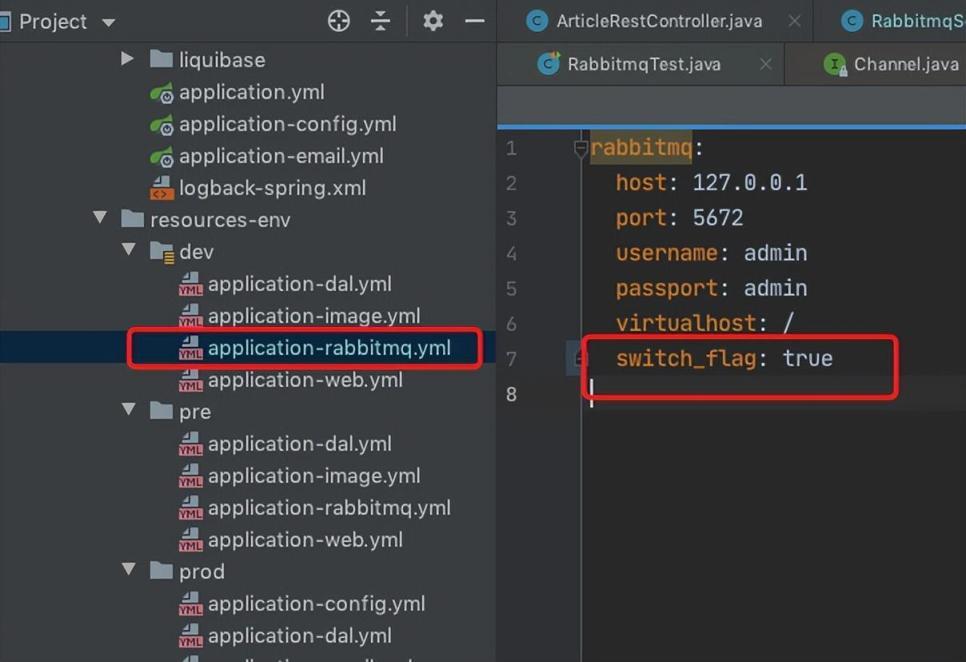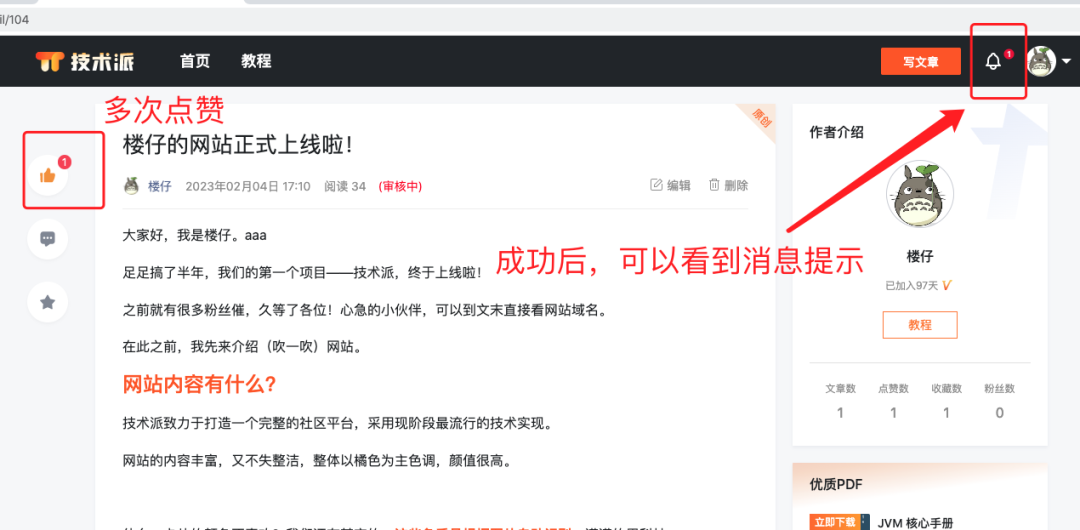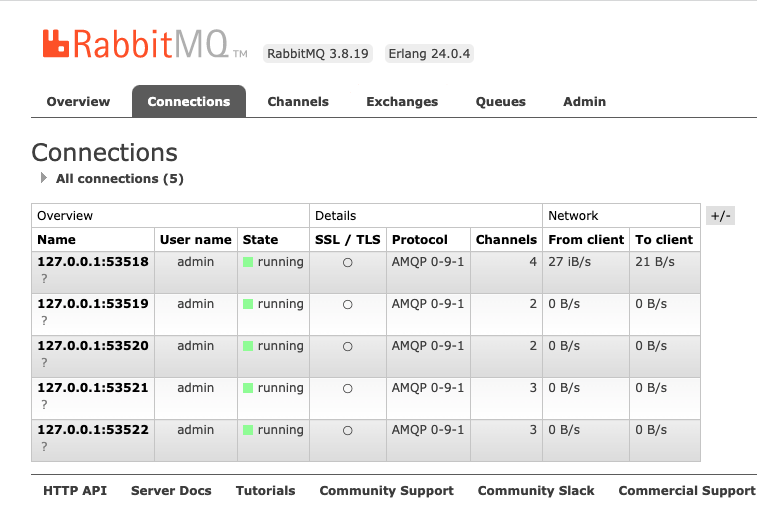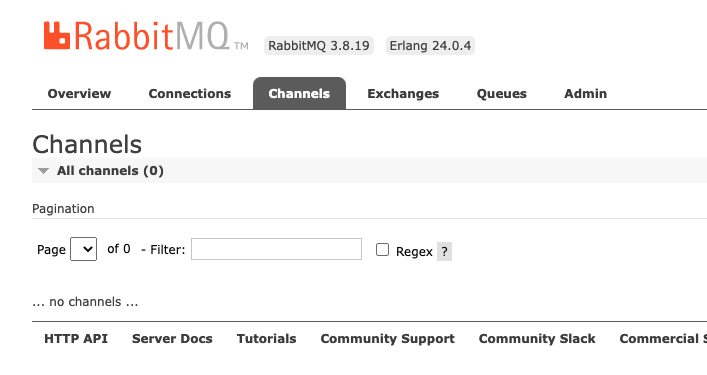上次我把 RabbitMQ 集成到项目中,但是每次使用 RabbitMQ 时都去 New 一个连接,导致并发起不来,所以这次我们就给 RabbitMQ 加一个连接池。
为了偷个懒,我直接用 ChatGPT 教我加。
01 ChatGPT 生成的代码
我输入的关键字如下:
下面是 GhatGPT 4.0 给我的回复:
以下是在Java中使用连接池创建RabbitMQ连接的示例:首先,需要添加pika客户端依赖项,例如:<dependency> <groupId>com.rabbitmq</groupId> <artifactId>amqp-client</artifactId> <version>5.9.0</version></dependency>
创建一个RabbitMQ连接类:import com.rabbitmq.client.Connection;public class RabbitMQConnection { private Connection connection; public RabbitMQConnection(String host, int port, String username, String password) { ConnectionFactory factory = new ConnectionFactory(); factory.setHost(host); factory.setPort(port); factory.setUsername(username); factory.setPassword(password); try { connection = factory.newConnection(); } catch (IOException | TimeoutException e) { e.printStackTrace(); } } public Connection getConnection() { return connection; } public void close() { try { connection.close(); } catch (IOException e) { e.printStackTrace(); } }}
创建一个RabbitMQ连接池类:import java.util.concurrent.BlockingQueue;import java.util.concurrent.LinkedBlockingQueue;public class RabbitMQConnectionPool { private final BlockingQueue<RabbitMQConnection> pool; public RabbitMQConnectionPool(String host, int port, String username, String password, int poolSize) { pool = new LinkedBlockingQueue<>(poolSize); for (int i = 0; i < poolSize; i++) { pool.add(new RabbitMQConnection(host, port, username, password)); } } public RabbitMQConnection getConnection() throws InterruptedException { return pool.take(); } public void returnConnection(RabbitMQConnection connection) { pool.add(connection); } public void close() { pool.forEach(RabbitMQConnection::close); }}
创建一个消费者类:import com.rabbitmq.client.*;public class RabbitMQConsumer implements Runnable { private final RabbitMQConnectionPool connectionPool; private final String queueName; public RabbitMQConsumer(RabbitMQConnectionPool connectionPool, String queueName) { this.connectionPool = connectionPool; this.queueName = queueName; } @Override public void run() { try { Connection connection = connectionPool.getConnection().getConnection(); Channel channel = connection.createChannel(); channel.queueDeclare(queueName, false, false, false, null); channel.basicConsume(queueName, true, (consumerTag, delivery) -> { String message = new String(delivery.getBody(), "UTF-8"); System.out.println("Received message: " + message); }, consumerTag -> {}); } catch (InterruptedException | IOException e) { e.printStackTrace(); } }}
创建一个生产者类:import com.rabbitmq.client.Channel;import com.rabbitmq.client.Connection;import com.rabbitmq.client.MessageProperties;public class RabbitMQProducer { private final RabbitMQConnectionPool connectionPool; private final String queueName; public RabbitMQProducer(RabbitMQConnectionPool connectionPool, String queueName) { this.connectionPool = connectionPool; this.queueName = queueName; } public void send(String message) { try { Connection connection = connectionPool.getConnection().getConnection(); Channel channel = connection.createChannel(); channel.queueDeclare(queueName, false, false, false, null); channel.basicPublish("", queueName, MessageProperties.PERSISTENT_TEXT_PLAIN, message.getBytes()); System.out.println("Sent message: " + message); channel.close(); connection.close(); } catch (InterruptedException|IOException e) { e.printStackTrace(); } }}
创建一个RabbitMQ连接池和多个消费者来消费队列:public class Main { public static void main(String[] args) throws InterruptedException { RabbitMQConnectionPool connectionPool = new RabbitMQConnectionPool("localhost", 5672, "guest", "guest", 10); RabbitMQProducer producer = new RabbitMQProducer(connectionPool, "hello"); producer.send("Hello, world!"); RabbitMQConsumer consumer1 = new RabbitMQConsumer(connectionPool, "hello"); Thread thread1 = new Thread(consumer1); thread1.start(); RabbitMQConsumer consumer2 = new RabbitMQConsumer(connectionPool, "hello"); Thread thread2 = new Thread(consumer2); thread2.start(); thread1.join(); thread2.join(); connectionPool.close(); }}
该示例代码创建了大小为10的连接池,并创建了两个消费者线程来消费队列,并使用一个生产者向队列发送消息。每个消费者从连接池获取连接,并消费队列中的消息,当完成任务后,将连接还回连接池。在实际部署中,您需要根据您的应用程序需求选择合适大小的池,并调整代码以使用正确的参数。
复制代码
我靠,这代码写的真牛逼,我需要做的事情,就是把里面连接池的部分,集成到我的项目中。
02 给 RabbitMQ 加连接池
2.1 加入连接池
之前我们给 ConnectionFactory 加了个单例工厂,具体可以参考我上一篇文章,由于我们有连接池,所以这个单例工厂就直接废弃了。
/** * @author Louzai * @date 2023/5/10 */public class RabbitmqConnection {
private Connection connection;
public RabbitmqConnection(String host, int port, String userName, String password, String virtualhost) { ConnectionFactory connectionFactory = new ConnectionFactory(); connectionFactory.setHost(host); connectionFactory.setPort(port); connectionFactory.setUsername(userName); connectionFactory.setPassword(password); connectionFactory.setVirtualHost(virtualhost); try { connection = connectionFactory.newConnection(); } catch (IOException | TimeoutException e) { e.printStackTrace(); } }
/** * 获取链接 * * @return */ public Connection getConnection() { return connection; }
/** * 关闭链接 * */ public void close() { try { connection.close(); } catch (IOException e) { e.printStackTrace(); } }}
复制代码
这个代码就是 ChatGPT 给我写的,我是直接 Copy 过来,然后稍微改动了一下。
public class RabbitmqConnectionPool {
private static BlockingQueue<RabbitmqConnection> pool;
public static void initRabbitmqConnectionPool(String host, int port, String userName, String password, String virtualhost, Integer poolSize) { pool = new LinkedBlockingQueue<>(poolSize); for (int i = 0; i < poolSize; i++) { pool.add(new RabbitmqConnection(host, port, userName, password, virtualhost)); } }
public static RabbitmqConnection getConnection() throws InterruptedException { return pool.take(); }
public static void returnConnection(RabbitmqConnection connection) { pool.add(connection); }
public static void close() { pool.forEach(RabbitmqConnection::close); }}
复制代码
2.2 RabbitMQ 发送消费消息
RabbitMQ 发送消息:从连接池拿到连接 -> 创建通道 -> 声明交换机 -> 发送消息 -> 将连接归还连接池。
这里的逻辑基本和之前的一样,只是之前是 New 一个连接,现在是直接从连接池拿到连接,然后最后多了一步归还连接的操作。
@Overridepublic void publishMsg(String exchange, BuiltinExchangeType exchangeType, String toutingKey, String message) { try { //创建连接 RabbitmqConnection rabbitmqConnection = RabbitmqConnectionPool.getConnection(); Connection connection = rabbitmqConnection.getConnection(); //创建消息通道 Channel channel = connection.createChannel(); // 声明exchange中的消息为可持久化,不自动删除 channel.exchangeDeclare(exchange, exchangeType, true, false, null); // 发布消息 channel.basicPublish(exchange, toutingKey, null, message.getBytes()); System.out.println("Publish msg:" + message); channel.close(); RabbitmqConnectionPool.returnConnection(rabbitmqConnection); } catch (InterruptedException | IOException | TimeoutException e) { e.printStackTrace(); }
}
复制代码
RabbitMQ 消费消息:从连接池拿到连接 -> 创建通道 -> 确定消息队列 -> 绑定队列到交换机 -> 接受并消费消息 -> 将连接归还连接池。
同上,这里的逻辑基本和之前的一样,只是多了一个拿连接和归还连接的过程。
@Overridepublic void consumerMsg(String exchange, String queueName, String routingKey) {
try { //创建连接 RabbitmqConnection rabbitmqConnection = RabbitmqConnectionPool.getConnection(); Connection connection = rabbitmqConnection.getConnection(); //创建消息信道 final Channel channel = connection.createChannel(); //消息队列 channel.queueDeclare(queueName, true, false, false, null); //绑定队列到交换机 channel.queueBind(queueName, exchange, routingKey);
Consumer consumer = new DefaultConsumer(channel) { @Override public void handleDelivery(String consumerTag, Envelope envelope, AMQP.BasicProperties properties, byte[] body) throws IOException { String message = new String(body, "UTF-8"); System.out.println("Consumer msg:" + message);
// 获取Rabbitmq消息,并保存到DB // 说明:这里仅作为示例,如果有多种类型的消息,可以根据消息判定,简单的用 if...else 处理,复杂的用工厂 + 策略模式 notifyService.saveArticleNotify(JsonUtil.toObj(message, UserFootDO.class), NotifyTypeEnum.PRAISE);
channel.basicAck(envelope.getDeliveryTag(), false); } }; // 取消自动ack channel.basicConsume(queueName, false, consumer); RabbitmqConnectionPool.returnConnection(rabbitmqConnection); } catch (InterruptedException | IOException e) { e.printStackTrace(); }}
复制代码
这个代码,其实 ChatGPT 写的有问题,你再回过头去看 ChatGPT 写的代码,发现连接取出,但是没有归还,那会出现什么问题呢?
这里给大家分析一下,由于我们的连接池用的是 BlockingQueue,连接池大小是 5,如果连接全部取出并都不归还,当第 6 个请求过来后,请求就卡住了,导致界面操作会被阻塞,请求完全没有反应。
不要问我怎么知道,因为我是踩坑过来的。
2.3 代码仓库
为了方便大家学习功能演变的过程,每个模块都会单独开个分支,连接池的分支和仓库如下:
如果需要运行 RabbitMQ,下面的配置需要改成 true,因为代码默认是 false。
3 实际效果
我们是把技术派的“点赞”功能消息,通过 RabbitMQ 方式处理,我们多次点击“点赞”按钮,触发 RammitMQ 消息发送。
可以通过日志,也可以看到发送和消费过的消息。
最后就是大家关心的连接池个数,打开 RabbitMQ 后台,发现永远只有 5 个连接,和我们的连接池大小一致,符合预期。
再看看打开的 Channel,由于每次都关闭,所以也没有了,也符合预期。
这里抛个疑问,每次新开一个 Channel,用完后关闭,是不是也很耗时?是否需要给 Channel 也搞一个连接池呢?可以评论区告诉我哈~~
4 后记
如果用 ChatGPT 3.5,给的结果就不一样,需要加入更多关键字,如果需要达到 GhatGPT 4.0 给的结果,你需要给 ChatGPT 3.5 以下关键字。
rabbitmq 用BlockingQueue实现一个连接池 java
复制代码
再回到 RabbitMQ 本身,上一篇文章只是告诉大家 RabbitMQ 的基本原理,以及如何集成 RabbitMQ,这篇文章主要教大家加连接池,其实这个示例,里面可以加的东西还很多。
学习嘛,就是边学边玩,后面有空,我想再加点东西,主要是想把 RabbitMQ 的消费方式,由阻塞改成非阻塞方式,可能会在下一篇文章给出,敬请期待!
















评论